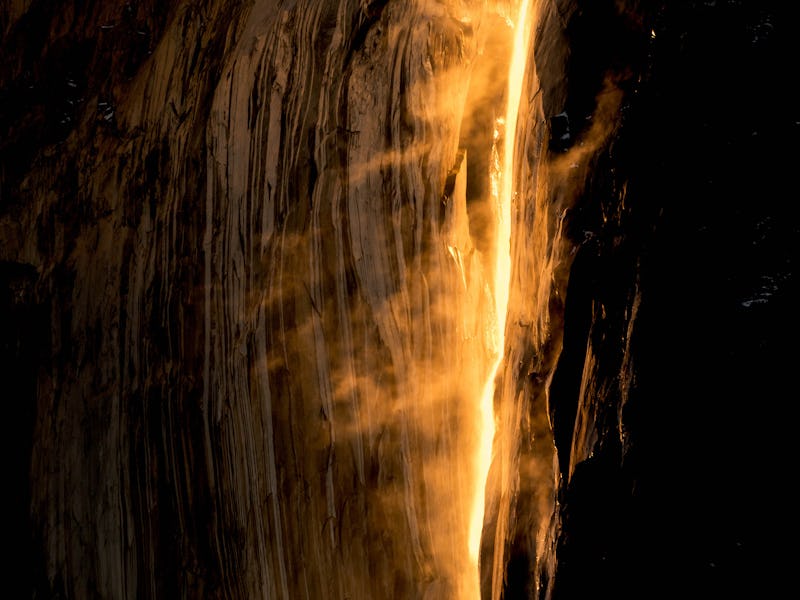Why a Yosemite Waterfall Looks Like a Gushing Magma Flow Right Now
Science explains why Horsetail Fall on El Capitan is going volcanic.

In a stunning display of magic straight out of the Hunger Games, a Yosemite National Park waterfall appears to catch on fire. It’s a natural quirk that occurs only a few days each year, when conditions are just right.
Horsetail Fall flows down the side of El Capitan, a 3,000-foot rock wall favored by base jumpers and thrill-seeking climbers. This year’s firefall was magnificent, drawing a crowd of thousands of photographers hoping for that perfect shot.
“In the over 20 years I have been photographing the firefall and leading workshops there in Yosemite, I have never seen a more spectacular one,” Michael Mariant, a California photographer, told the New York Times. Photographers camped out from 8 a.m. Saturday to stake out the best angle, photographer Vincent James wrote in an Instagram post. And they weren’t disappointed. “The orange glow on the falls was truly stunning to see in person,” he wrote.
But how does a waterfall catch fire? The first ingredient is sufficient water. For the falls to catch the light, they have to be gushing. And for that to happen, there has to have been enough accumulated snow and rainfall over the winter. For this reason, the firefall effect only occurs for a maximum of about 10 days per year, typically at the end of February when the water flow is strongest.
The second ingredient is a sunset — the redder the better. From the right angle, the waterfall will catch and reflect the sunset’s reds, oranges, and yellows, but only for a few minutes as the sun falls to the horizon.
In recent years California’s drought had dulled the firefalls. But this year’s giant El Niño has eased the drought and brought back the firefall, with a vengeance.